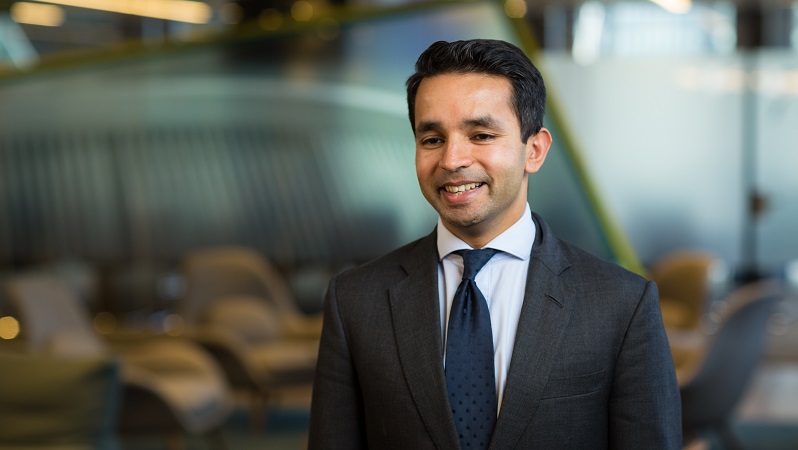Aviva Investors has traditionally looked unfavourably on UK assets for its multi-asset fund (MAF) range, but the lingering Covid crisis and resurfacing Brexit uncertainty has changed all that.
The balanced portfolio within the firm’s range of five risk-rated portfolios (MAF III) has 65.25% allocated to growth assets. Within this, the UK accounts for just 7.25%, lower than the 22.28% exposure to the US, 8.1% to Europe and 7.79% to emerging global assets.
At the end of November the MAF range will become known as MAF Plus to reflect some enhancements, including a new performance benchmark and target. As a result, MAF Plus portfolios will target an average return of 1.3% per annum in excess of its benchmark before charges and taxes.
It will also launch a low-cost sister range called MAF Core, which will carry an OCF of 15 basis points. It will have a degree of active asset allocation and security selection but will lean heavily on passive funds.
Discussing the MAF Plus range, head of multi-asset Sunil Krishnan (pictured) says on a topdown view of portfolios, the team looks to balance equity holdings with exposure to credit or emerging market debt, and diversifies with exposure to select government bond markets and alternatives.
But on a more tactical, short-term basis, indiscriminate moves in markets on the back of Covid-19 have provided opportunities to either add protection or increase exposure to better market themes.
Home economics
The MAP team has traditionally viewed the UK as a serial underperformer. Structurally, portfolios have been more global in nature; but that is changing.
“We’ve always been concerned about the tendency of peers to retain home bias for historical reasons, so weightings to UK equities were perhaps lower than some,” says Krishnan. “But we need to recognise when conditions change, and valuations for large parts of the UK are pretty inexpensive.”
He points to a dividend yield of 3.8% in the UK, even after the raft of shareholder payout cuts, as “something that needs to be considered” in the context of a negative yield on five-year gilts.
The team has added to UK large caps at the expense of UK mid- and small cap. First, because some of the most beaten-up parts of the market, such as commodities and banks, are more heavily represented in large cap, and analysis on reported earnings suggests these may be lagging behind the recent oil price recovery.
Second, the outlook for the UK economy is not as strong relative to other countries, especially since the resurfacing of Brexit risk. A resulting weaker currency is likely to hurt small and mid-sized firms the most.
“We still expect there to be a Brexit deal but it will be quite skinny in nature and will leave a lot of industries facing additional regulatory burdens compared to what they faced when we were a full member of the European Union,” he says.
Then there is the trade-off between economic stimulus and Covid safe policy, or lockdowns, which Krishnan says puts strain on the UK economy.
“That gives us greater concern for the smaller UK companies that have more of a domestic focus.”
Global concerns
Elsewhere in the growth portfolio, the team is cautious on Japan and the US. “We feel that maybe the combination of valuations and the outlook is not as attractive as other markets,” says Krishnan.
On Japan, he highlights companies’ sensitivity to capital spending from international firms and their willingness to spend. Further changes in policies to limit coronavirus are also a concern.
In the latest market update on the company’s website, Krishnan notes Japan’s new prime minister Yoshihide Suga does not belong to a political faction within the Liberal Democratic Party. This might mean he has to negotiate hard to develop a support base.
“There is a possibility he will call an early general election to shore up this base, which makes a policy step-change uncertain,” Krishnan adds.
In terms of the US, despite strong performance over the summer, the uncertainty around the presidential election and gains in a handful of stocks are concerns.
He notes the narrative that tech companies’ recent weakness is an opportunity for undervalued parts of the market to perform better – industrials, banks – but this has not been the case historically.
“When outlandish tech valuations began to fall, the broader market remained relatively flat for a long period before falling in turn,” he says of the aftermath of the dotcom crisis.
Taking credit
The team prefers credit markets as a growth play because of the scope of the direct support from policymakers in response to Covid, which has significantly improved the risk-reward balance.
“The remarkable thing about the policy response was that central banks, and especially the Federal Reserve, came to the view that the corporate bond markets are part of how they define financial stability.
“That’s quite an important change in comparison with, for example, the 2008 financial crisis, when there was no real official support from central banks for those markets. Therefore, the volatility and the rise in the spread of the increased borrowing costs lasted for a lot longer.
According to Krishnan, investment-grade bonds spreads have tightened over safe havens since the Covid crisis, and while there is still value, the team has moved further into the high-yield market where there is more of a pick-up, certainly compared with government debt.
Aiming high
Another supporting factor for high yield, in the US particularly, is a more stable oil price, says Krishnan. In April, the spot price entered negative territory. It’s now hovering at $40 (£30.70) a barrel, which “provides a more supportive backdrop for the energy complex of high-yield issuers”.
As a non-open-architecture multi-as – set range, the majority of MAF expo – sure is through in-house Aviva Investors’ funds, but in certain areas third-party managers are used. One of these is the Twentyfour Income Fund, which offers access to asset-backed securities.
“There are opportunities within some of the more specialist markets, for example the commercial mortgage market in the UK versus residential. If you look at the European asset-backed securities market, defaults, even in tough times, have been low, and therefore it potentially provides us with a kind of asymmetric exposure, while picking up the additional returns we look for.”







